Performance Evaluation of Architectural Modular Member with Ultra-High-Performance Fiber-Reinforced Concrete for Application
Abstract
1. Introduction
2. Variables and Material Characteristics
2.1. Main Variables for the Modular Slab
2.2. Materials Used and Mix Proportion
2.3. Chloride Resistance Performance
2.4. Mechanical Properties
3. Experimental Variables and Results
3.1. Experimental Variables
3.2. Experimental Method
3.3. Experimental Results and Analysis
4. Evaluation of the UHPFRC Single-Story Modular House Manufacturability
4.1. Basic Review of the UHPFRC Modular Structure
4.2. Design Loads and Materials Used
4.3. Modeling for Structural Analysis
4.4. Stress Review
4.5. Fabrication of a Single-Story Modular Structure
5. Economic Feasibility Analysis of the Modular House
6. Conclusions
- To develop UHPFRC-based modular members, the flexural performance of NC elements and that of UHPFRC-F, UHPFRC-T, and UHPFRC-I series were evaluated. The results indicated that in UHPFRC modular structures, concrete usage could be reduced by up to 40–60% compared to that in modules with NC. However, ensuring structural safety while achieving similar performance and ductility effects as NC is crucial. The flexural strength of the N24-H20-R1 element was evaluated as 36.6 kN-m, while the S120-H12-R1 element exhibited a flexural strength of 37.2 kN-m. Their ductility indices were 6.44 and 7.08, respectively, showing similar flexural performances. Hence, the primary variables determining the optimal cross-section of the UHPFRC modular member were designated as follows: design compressive strength of 120 MPa, thickness of 120 mm for the member, and longitudinal rebar diameter of D10.
- To fabricate a modular structure based on UHPFRC, structural assessments were conducted for a total of 6 sections, 4 stories high, with each unit module 3.37 m in width, 10.5 m in length, and 2.9 m in height. Basic structural assessments, including bending and shear, were carried out solely to verify the constructability of the unit modules. An initial module was manufactured with dimensions of 3.3 m in width, 2.9 m in height, and 1.0 m in length utilizing UHPFRC to confirm the feasibility of implementation.
- An analysis was conducted on the construction costs of modular structures using UHPFRC compared to those of structures employing steel. The results indicated an approximately 18.7% reduction in construction costs for UHPFRC modular structures compared to steel structures (using the infill method). Recent increases in raw material prices have notably affected the economics, particularly the price of steel in steel-structure modular constructions, which was found to be a significant factor, reaching USD 3000 per ton. Considering the volatility in steel prices, economic feasibility could be ensured up to 70% of the current steel price. The application of UHPFRC in modular structures appears to be adaptable to various construction environments. However, detailed studies regarding the productivity of units of UHPFRC modular structures, connections, and seismic considerations were deemed necessary.
Author Contributions
Funding
Institutional Review Board Statement
Informed Consent Statement
Data Availability Statement
Conflicts of Interest
References
- Blismas, N.; Christine, C.; Gibb, A. Benefit evaluation for off-site production in construction. Con. Manag. Econ. 2006, 24, 121–130. [Google Scholar] [CrossRef]
- Gibb, A.; Isack, F. Re-engineering through pre-assembly: Client expectations and drivers. Build. Res. Inf. 2003, 31, 146–160. [Google Scholar] [CrossRef]
- Pan, W.; Alistair, G.F.; Gibb, A.; Dainty, A.R. Leading UK housebuilders’ utilization of offsite construction methods. Build. Res. Inf. 2008, 36, 56–67. [Google Scholar] [CrossRef]
- Sun, Y.; Wang, J.; Wu, J.; Shi, W.; Ji, D.; Wang, X.; Zhao, X. Constraints hindering the development of high-rise modular buildings. Appl. Sci. 2020, 10, 7159. [Google Scholar] [CrossRef]
- Zhang, X.; Skitmore, M. Industrialized housing in China: A coin with two sides. Int. J. Strateg. Prop. Manag. 2012, 16, 143–157. [Google Scholar] [CrossRef]
- Lawson, R.M.; Ogden, R.G.; Bergin, R. Application of modular construction in high-rise buildings. J. Archit. Eng. 2012, 18, 148–154. [Google Scholar] [CrossRef]
- Kamali, M.; Hewage, K. Life cycle performance of modular buildings: A critical review. Renew. Sustain. Energy Rev. 2016, 62, 1171–1183. [Google Scholar] [CrossRef]
- Boafo, F.E.; Kim, J.H.; Kim, J.T. Performance of modular prefabricated architecture: Case study-based review and future pathways. Sustainability 2016, 8, 558. [Google Scholar] [CrossRef]
- Li, X.; Yi, W.; Chi, H.L.; Wang, X.; Chan, A.P. A critical review of virtual and augmented reality (VR/AR) applications in construction safety. Autom. Constr. 2018, 86, 150–162. [Google Scholar] [CrossRef]
- Ho, K.M.; Lam, J.P.; Max, S. Pre-Fabricated Pre-Finished Volumetric Construction (PPVC) for Residential Projects; Threesixty Cost Management Pte Ltd.: Bukit Merah, Singapore, 2018. [Google Scholar]
- Chen, K.; Lu, W. Design for manufacture and assembly oriented design approach to a curtain wall system: A case study of a commercial building in Wuhan, China. Sustainability 2018, 10, 2211. [Google Scholar] [CrossRef]
- Hu, X.; Chong, H.Y.; Wang, X. Sustainability perceptions of off-site manufacturing stakeholders in Australia. J. Clean. Prod. 2019, 227, 346–354. [Google Scholar] [CrossRef]
- Prabowo, P.A. Multi-storey modular cold-formed steel building in Hong Kong: Challenges & opportunities. IOP Conf. Ser. Mater. Sci. Eng. 2019, 650, 012033. [Google Scholar]
- Generalova, E.M.; Generalov, V.P.; Kuznetsova, A.A. Modular buildings in modern construction. Procedia Eng. 2016, 153, 167–172. [Google Scholar] [CrossRef]
- Said, H.; Ali, A.R.; Alshehri, A. Analysis of the Growth Dynamics and Structure of Modular Building Construction Industry. Cons. Res. Congr. 2014, 1977–1986. [Google Scholar]
- Abdul Nabi, M.; El-adaway, I.H. Modular Construction: Determining Decision-Making Factors and Future Research Needs. J. Manag. Eng. 2020, 36, 04020085. [Google Scholar] [CrossRef]
- Goodier, C.; Gibb, A. Future opportunities for offsite in the UK. Constr. Manag. Econ. 2007, 25, 585–595. [Google Scholar] [CrossRef]
- Kamar, K.; Azman, M.; Nawi, M. IBS Survey 2010: Drivers, barriers and critical success factors in adopting industrialised building system (Ibs) Construction by G7 contractors in Malaysia. J. Eng. Sci. Technol. 2014, 9, 490–501. [Google Scholar]
- Steinhardt, D.A.; Manley, K. Adoption of prefabricated housing-the role of country context. Sustain. Cities Soc. 2016, 22, 126–135. [Google Scholar] [CrossRef]
- Tam, V.W.; Fung, I.W.; Sing, M.C.; Ogunlana, S.O. Best practice of prefabrication implementation in the Hong Kong public and private sectors. J. Clean. Prod. 2015, 109, 216–231. [Google Scholar] [CrossRef]
- Hampson, K.D.; Brandon, P. Construction 2020: A Vision for Australia’s Property and Construction Industry; Cooperative Research Centre for Construction Innovation: Brisbane, Australia, 2004. [Google Scholar]
- Kim, J.H.; Park, I.K. The Practical Application of Modular Construction for Residential Facilities. J. Korean Hous. Assoc. 2013, 24, 19–26. [Google Scholar] [CrossRef]
- Liu, C.; Fang, D.; Zhao, L.; Zhou, J. Seismic fragility estimates of steel diagrid structure with performance-based tests for high-rise buildings. J. Build. Eng. 2022, 52, 104459. [Google Scholar] [CrossRef]
- Lee, D.Y.; Cho, B.H.; Hong, P.G.; Ha, T.H. Seismic performance evaluation of beam-column connection of unitized floor system. J. Korean Soc. Steel Constr. 2019, 31, 85–96. [Google Scholar] [CrossRef]
- Narayanan, N.; Ramamurthy, K. Structure and properties of aerated concrete: A review. Cem. Concr. Compos. 2000, 22, 321–329. [Google Scholar] [CrossRef]
- Adhikary, S.K.; Rudžionis, Ž.; Tučkutė, S. Characterization of novel lightweight self-compacting cement composites with incorporated expanded glass, aerogel, zeolite and fly ash. Case Stud. Constr. Mater. 2022, 16, e00879. [Google Scholar] [CrossRef]
- Altalabani, D.; Linsel, S.; Bzeni, D.K. Rheological properties and strength of polypropylene fiber-reinforced self-compacting lightweight concrete produced with ground limestone. Arab. J. Sci. Eng. 2020, 45, 4171–4185. [Google Scholar] [CrossRef]
- Muthusamy, S.; Kolandasamy, P. Samozbijajući lagani beton na visokim temperaturama. Građevinar 2015, 67, 329–338. [Google Scholar]
- Ranjbar, N.; Behnia, A.; Alsubari, B.; Birgani, P.M.; Jumaat, M.Z. Durability and mechanical properties of self-compacting concrete incorporating palm oil fuel ash. J. Clean. Prod. 2016, 112, 723–730. [Google Scholar] [CrossRef]
- Sabet, F.A.; Libre, N.A.; Shekarchi, M. Mechanical and durability properties of self consolidating high performance concrete incorporating natural zeolite, silica fume and fly ash. Constr. Build. Mater. 2013, 44, 175–184. [Google Scholar] [CrossRef]
- Ke, Y.; Beaucour, A.L.; Ortola, S.; Dumontet, H.; Cabrillac, R. Influence of volume fraction and characteristics of lightweight aggregates on the mechanical properties of concrete. Const. Build. Mater. 2009, 23, 2821–2828. [Google Scholar] [CrossRef]
- Real, S.; Gomes, M.G.; Rodrigues, A.M.; Bogas, J.A. Contribution of structural lightweight aggregate concrete to the reduction of thermal bridging effect in buildings. Const. Build. Mater. 2016, 121, 460–470. [Google Scholar] [CrossRef]
- Roberz, F.; Loonen, R.C.G.M.; Hoes, P.; Hensen, J.L.M. Ultra-lightweight concrete: Energy and comfort performance evaluation in relation to buildings with low and high thermal mass. Energy Build. 2017, 138, 432–442. [Google Scholar] [CrossRef]
- Abbass, A.A.; Abid, S.R.; Arna’ot, F.H.; Al-Ameri, R.A.; Özakça, M. Flexural response of hollow high strength concrete beams considering different size reductions. Structures 2020, 23, 69–86. [Google Scholar] [CrossRef]
- Bai, Z.Z.; Au, F.T.K. Flexural ductility design of high-strength concrete columns. Struct. Des. Tall Spec. Build. 2013, 22, 92–115. [Google Scholar] [CrossRef]
- Koziński, K.; Winnicki, A. Experimental research and analysis of load capacity and deformability of slender high strength concrete columns in biaxial bending. Eng. Struct. 2016, 107, 47–65. [Google Scholar] [CrossRef]
- Taheri, A.; Tasnimi, A.A.; Moghadam, A.S. Experimental investigation on the seismic behavior and damage states of reinforced high strength concrete columns. Structures 2020, 27, 163–173. [Google Scholar] [CrossRef]
- Kim, K.C.; Yang, I.H.; Joh, C. Effects of single and hybrid steel fiber lengths and fiber contents on the mechanical properties of high-strength fiber-reinforced concrete. Adv. Civil Eng. 2018, 2018, 7390798. [Google Scholar] [CrossRef]
- Shaikh, F.U.A.; Luhar, S.; Arel, H.Ş.; Luhar, I. Performance evaluation of Ultrahigh performance fibre reinforced concrete—A review. Const. Build. Mater. 2020, 232, 117152. [Google Scholar] [CrossRef]
- Li, J.; Wu, Z.; Shi, C.; Yuan, Q.; Zhang, Z. Durability of ultra-high performance concrete—A review. Const. Build. Mater. 2020, 255, 119296. [Google Scholar] [CrossRef]
- Harsono, K.; Shih, S.G.; Chen, Y.J. The Integration of Design and Fabrication for Prefabricated UHPC Panels of Building Facades. In Proceedings of the 5th International Conference on Civil and Building Engineering Informatics, Bangkok, Thailand, 19–21 July 2023; pp. 444–451. [Google Scholar]
- Ding, R.; Sun, Y.T.; Nie, X.; Chen, D.Q. Experimental study on seismic behavior of an unreinforced precast wall-slab structure based on UHPC sandwich panels. J. Build. Eng. 2023, 68, 106197. [Google Scholar] [CrossRef]
- Li, Z.; Chen, D.; Feng, X.; Chen, J.F. Hydroelastic analysis and structural design of a modular floating structure applying ultra-high performance fiber-reinforced concrete. Ocean Eng. 2023, 277, 114266. [Google Scholar] [CrossRef]
- Lu, J.X.; Ali, H.A.; Jiang, Y.; Guan, X.; Shen, P.; Chen, P. A novel high-performance lightweight concrete prepared with glass-UHPC and lightweight microspheres: Towards energy conservation in buildings. Compos. Part B 2022, 247, 110295. [Google Scholar] [CrossRef]
- Seo, E.A.; Kim, W.W.; Kim, S.K.; Kwon, H.K.; Lee, H.J. Mechanical properties of 3D printed concrete with coarse aggregates and polypropylene fiber in the air and underwater environment. Const. Build. Mater. 2023, 378, 131184. [Google Scholar] [CrossRef]
- Katzer, J.; Skoratko, A. Using 3D printed formworks for the creation of steel fibre reinforced concrete-plastic columns. Const. Build. Mater. 2022, 337, 127586. [Google Scholar] [CrossRef]
- Hematibahar, M.; Hasanzadeh, A.; Vatin, N.I.; Kharun, M.; Shooshpasha, I. Influence of 3D-printed reinforcement on the mechanical and fracture characteristics of ultra high performance concrete. Results Eng. 2023, 19, 101365. [Google Scholar] [CrossRef]
- KCI (Korea Concrete Institute). The Structural Design Guideline of the Fiber Reinforced SUPER Concrete; KCI: Seoul, Republic of Korea, 2019. [Google Scholar]
- Shin, H.O.; Yoo, D.Y.; Lee, J.H.; Lee, S.H.; Yoon, Y.S. Optimized mix design for 180 MPa ultra-high-strength concrete. J. Mater. Res. Technol. 2019, 8, 4182–4197. [Google Scholar] [CrossRef]
- Tan, L.; Yang, J.; Li, C.; Zhang, G.; Ding, Q.; Sun, D.; Zhang, Y. Effect of Polyoxymethylene Fiber on the Mechanical Properties and Abrasion Resistance of Ultra-High-Performance Concrete. Materials 2023, 16, 7014. [Google Scholar] [CrossRef]
- ASTM C1202-22; Standard Test Method for Electrical Indication of Concrete’s Ability to Resist Chloride Ion Penetration. ASTM International: West Conshohocken, PA, USA, 2022.
- ASTM C39M-21; Standard Test Method for Compressive Strength of Cylindrical Concrete Specimens. ASTM International: West Conshohocken, PA, USA, 2021.
- ASTM C496-96; Standard Test Method for Splitting Tensile Strength of Cylindrical Concrete Specimens. ASTM International: West Conshohocken, PA, USA, 2017.
- KDS 14 20 72:2016; Concrete Wall Design Code. Korean Concrete Institute(KCI): Seoul, Republic of Korea, 2016.
- Kim, K.C.; Yang, I.H.; Joh, C. Material properties and structural characteristics on flexure of steel fiber-reinforced ultra-high-performance concrete. J. Korea Concr. Inst. 2016, 28, 177–185. [Google Scholar] [CrossRef]
- Yang, I.H.; Kim, K.C.; Joh, C.B. Structural Behavior of Hybrid Steel Fiber-Reinforced Ultra High Performance Concrete Beams Subjected to Bending. J. Korea Concr. Inst. 2014, 26, 771–778. [Google Scholar] [CrossRef]
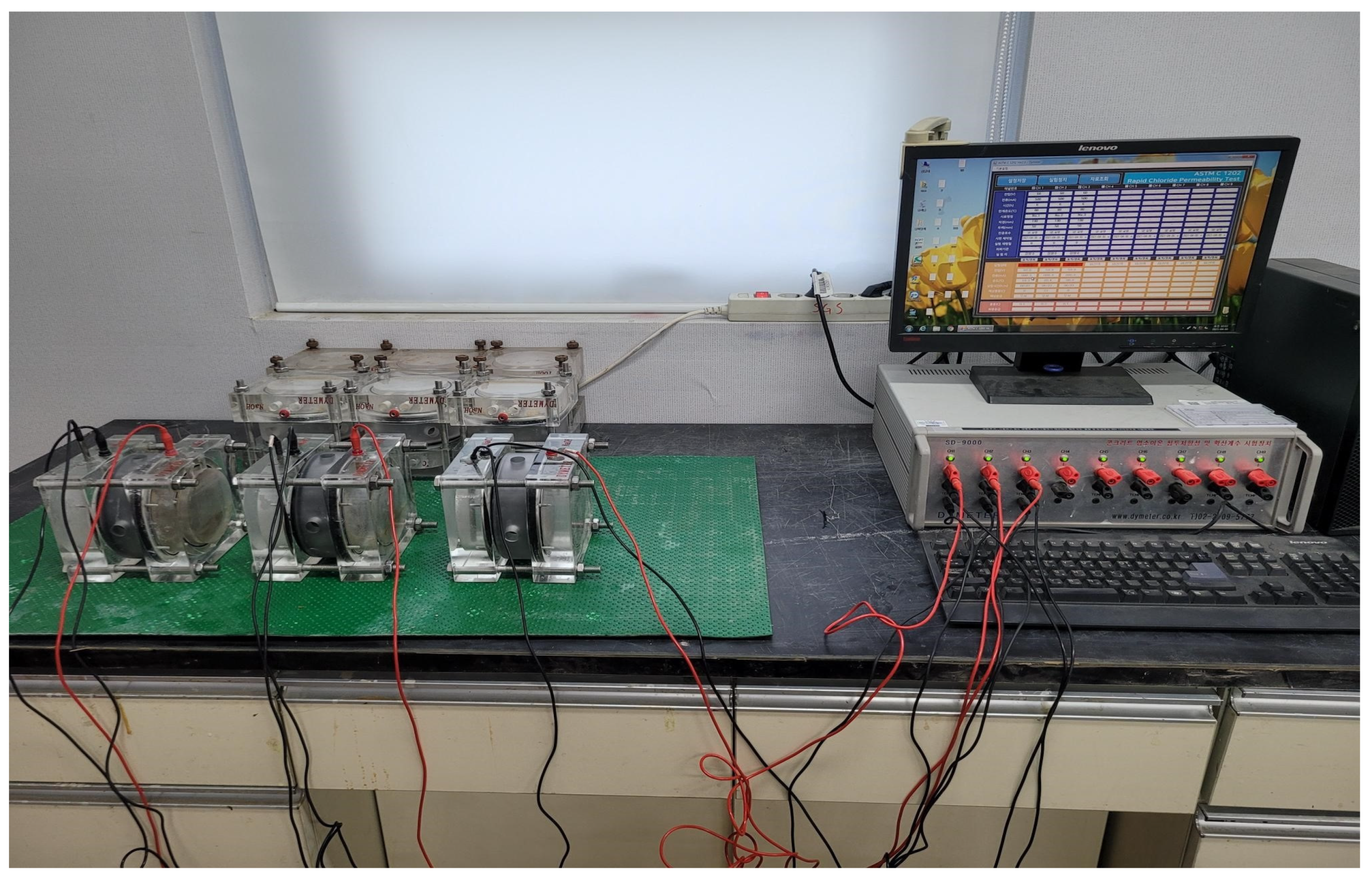
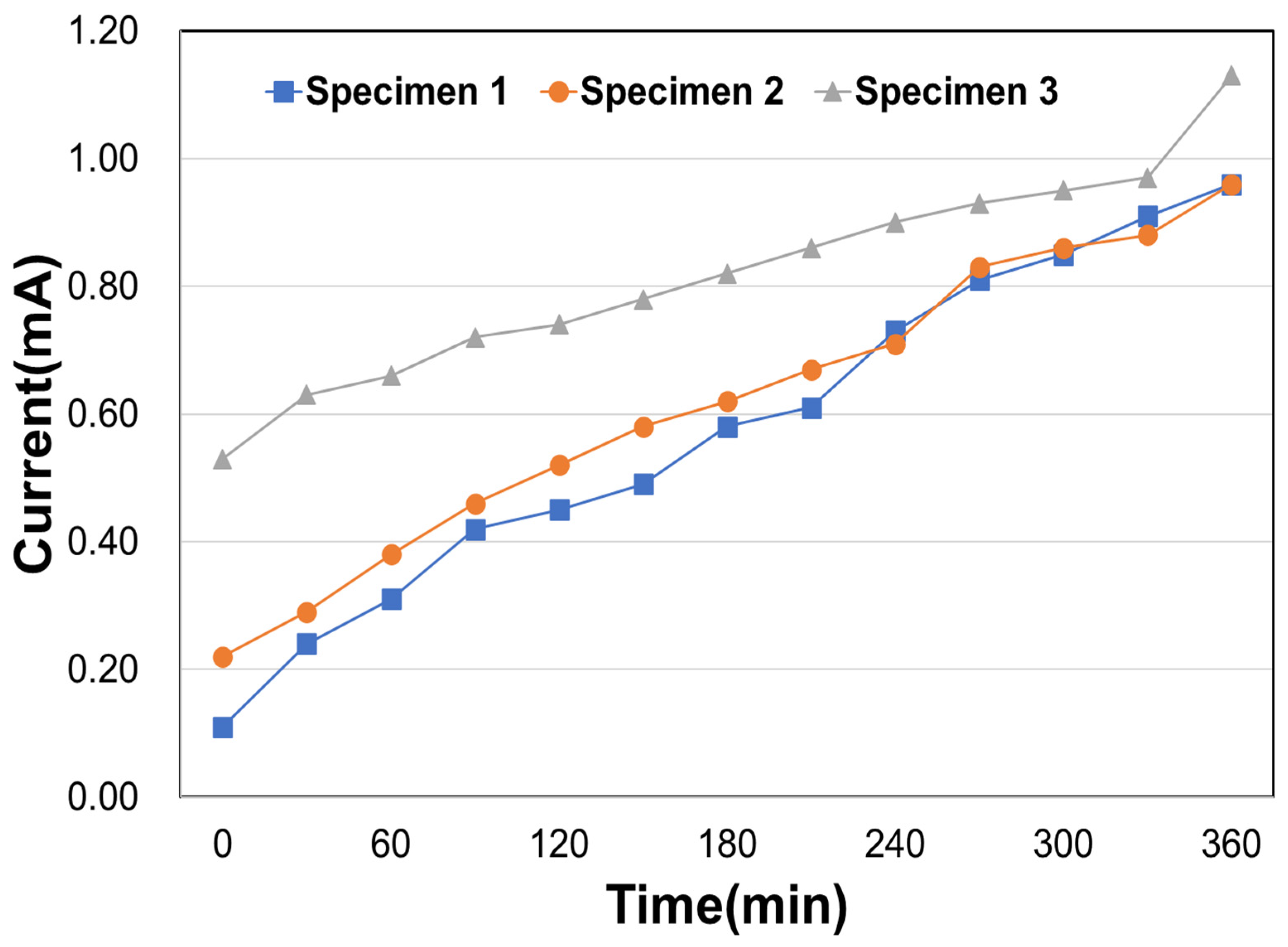
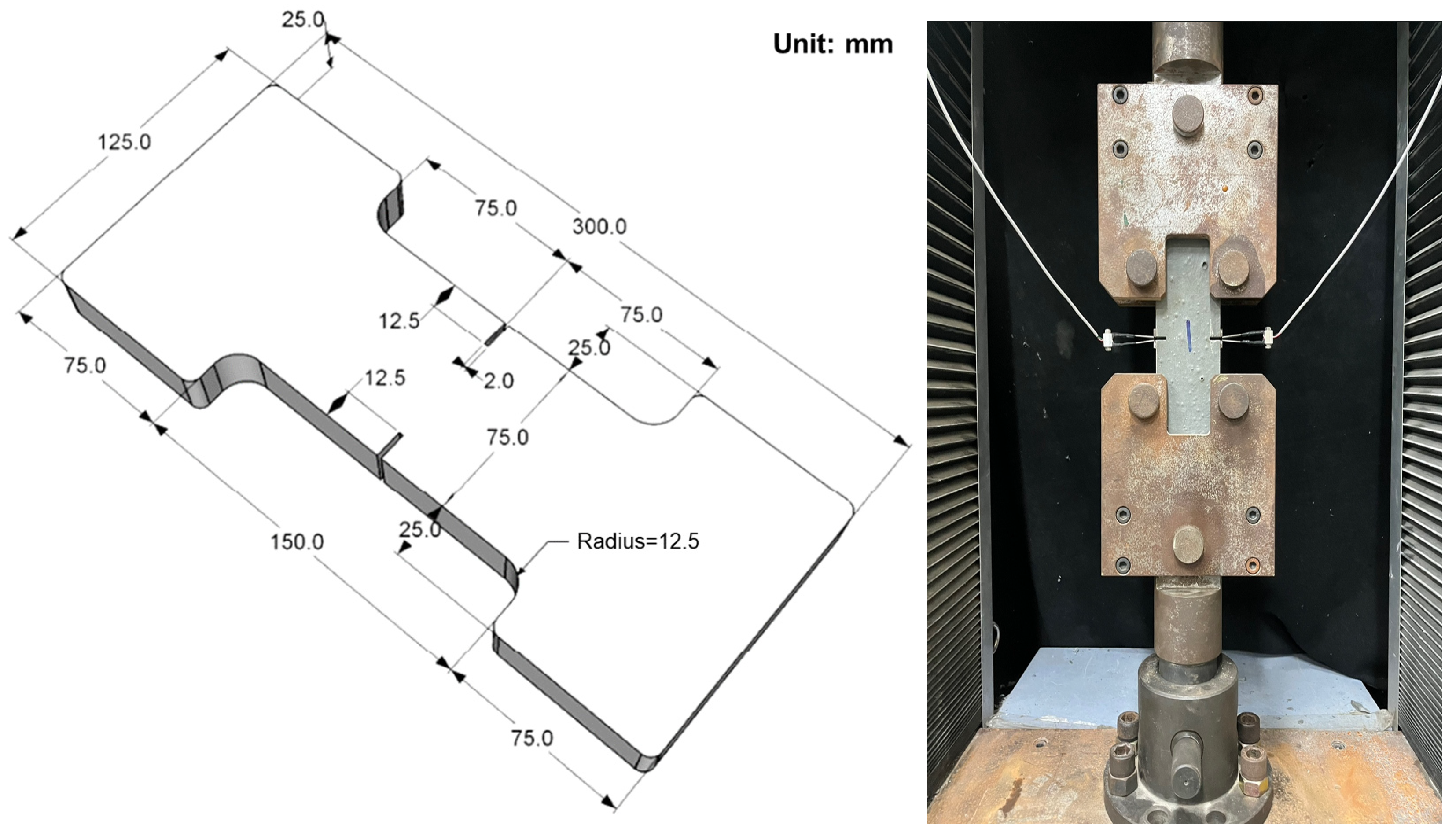
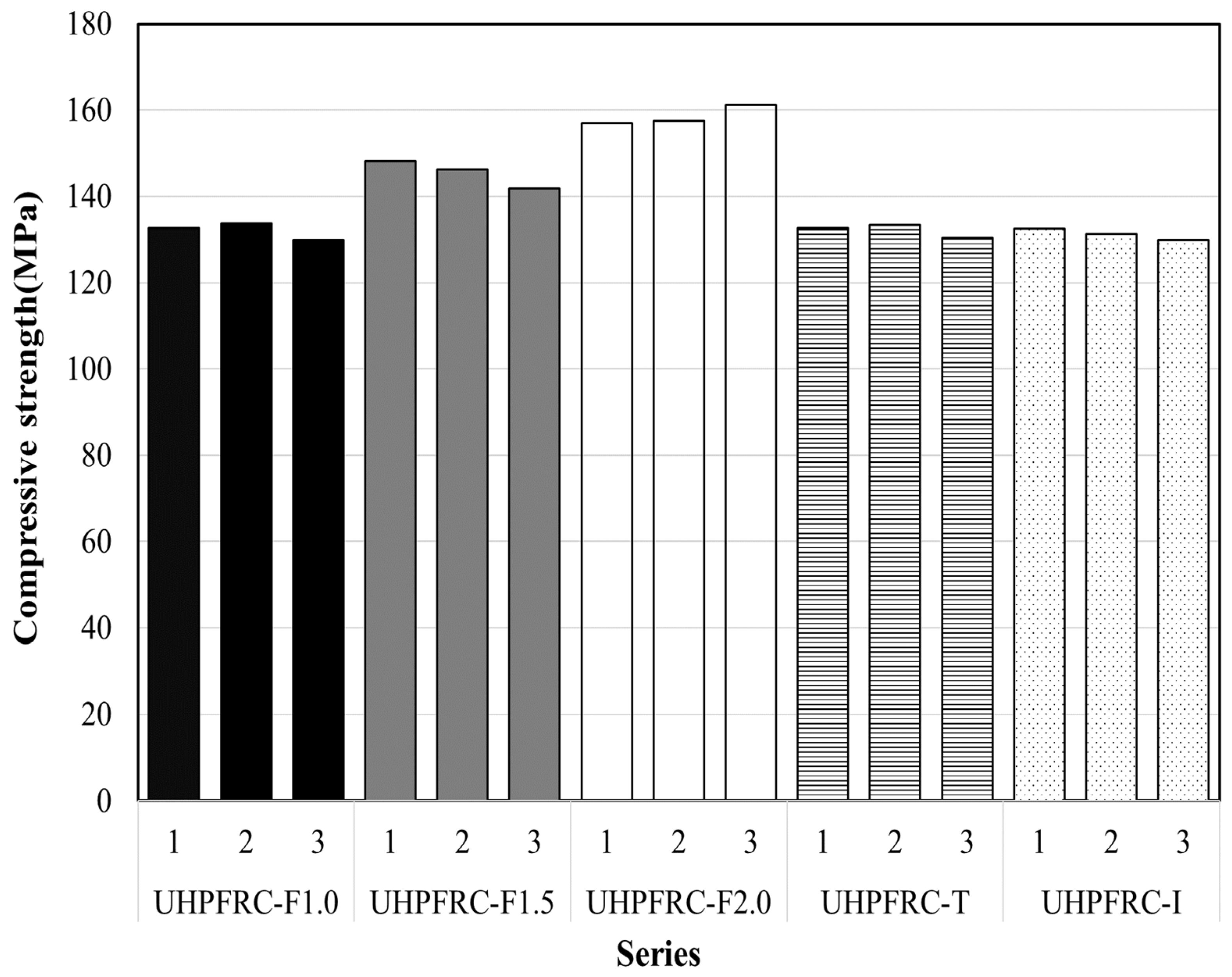

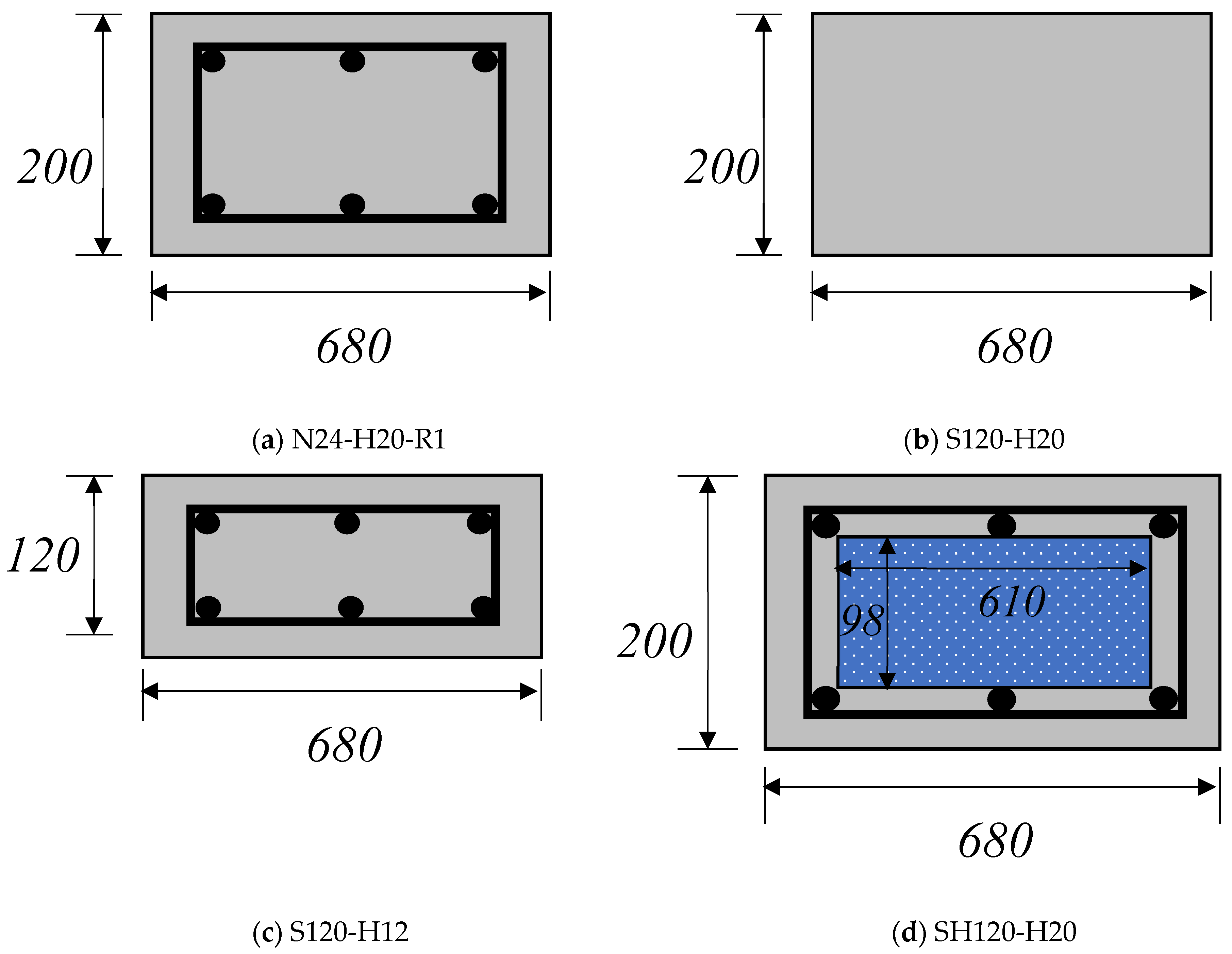
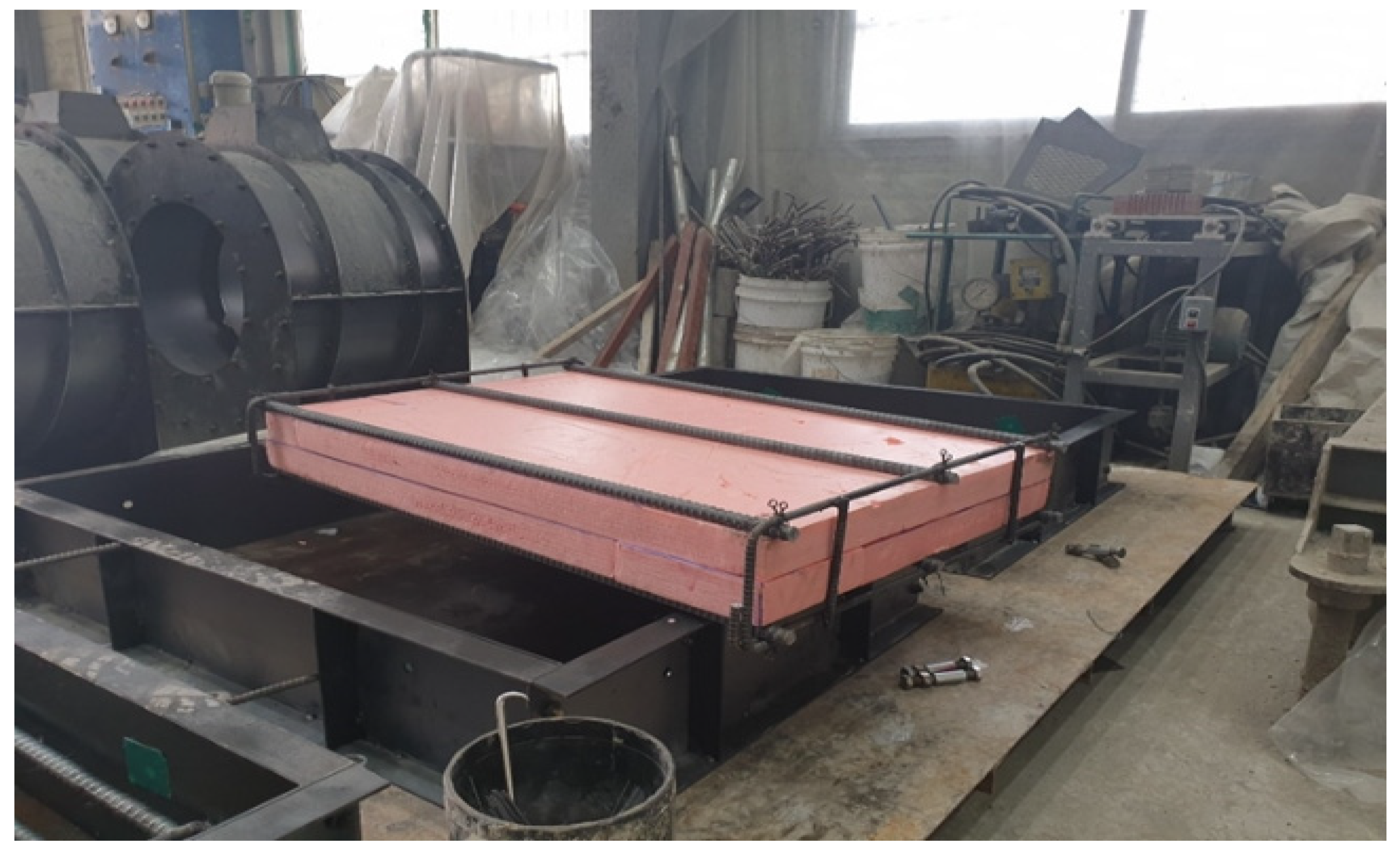
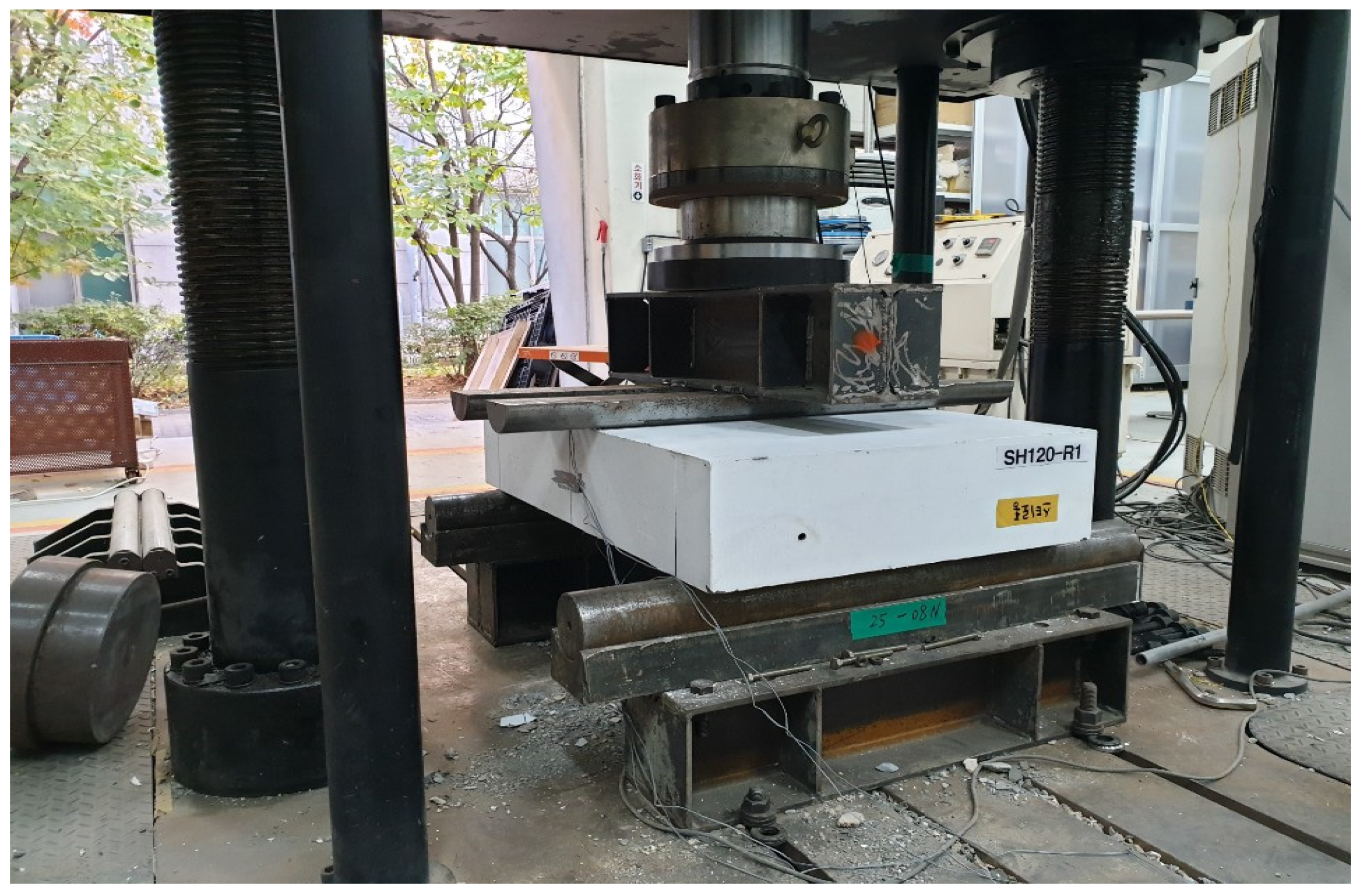
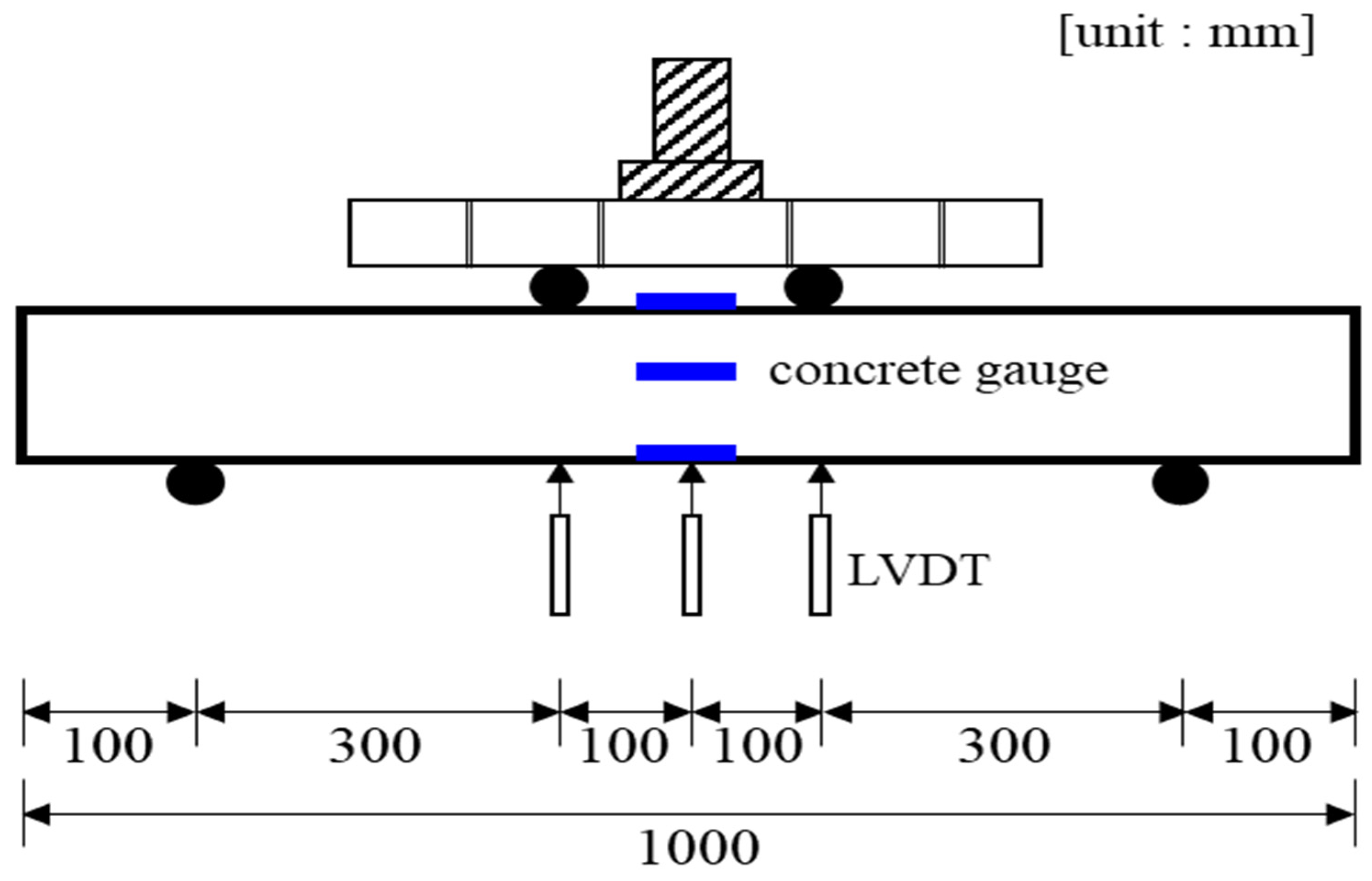

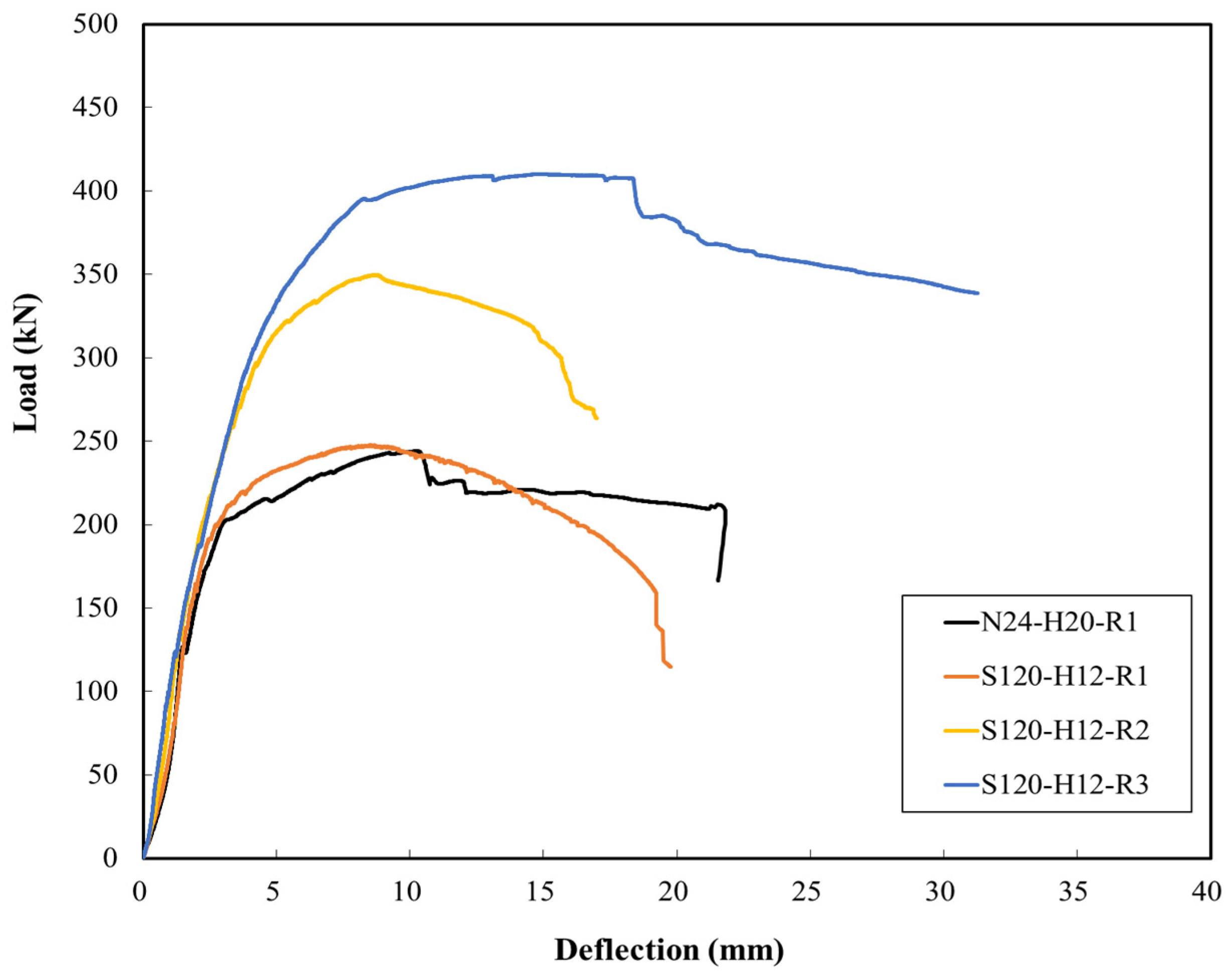
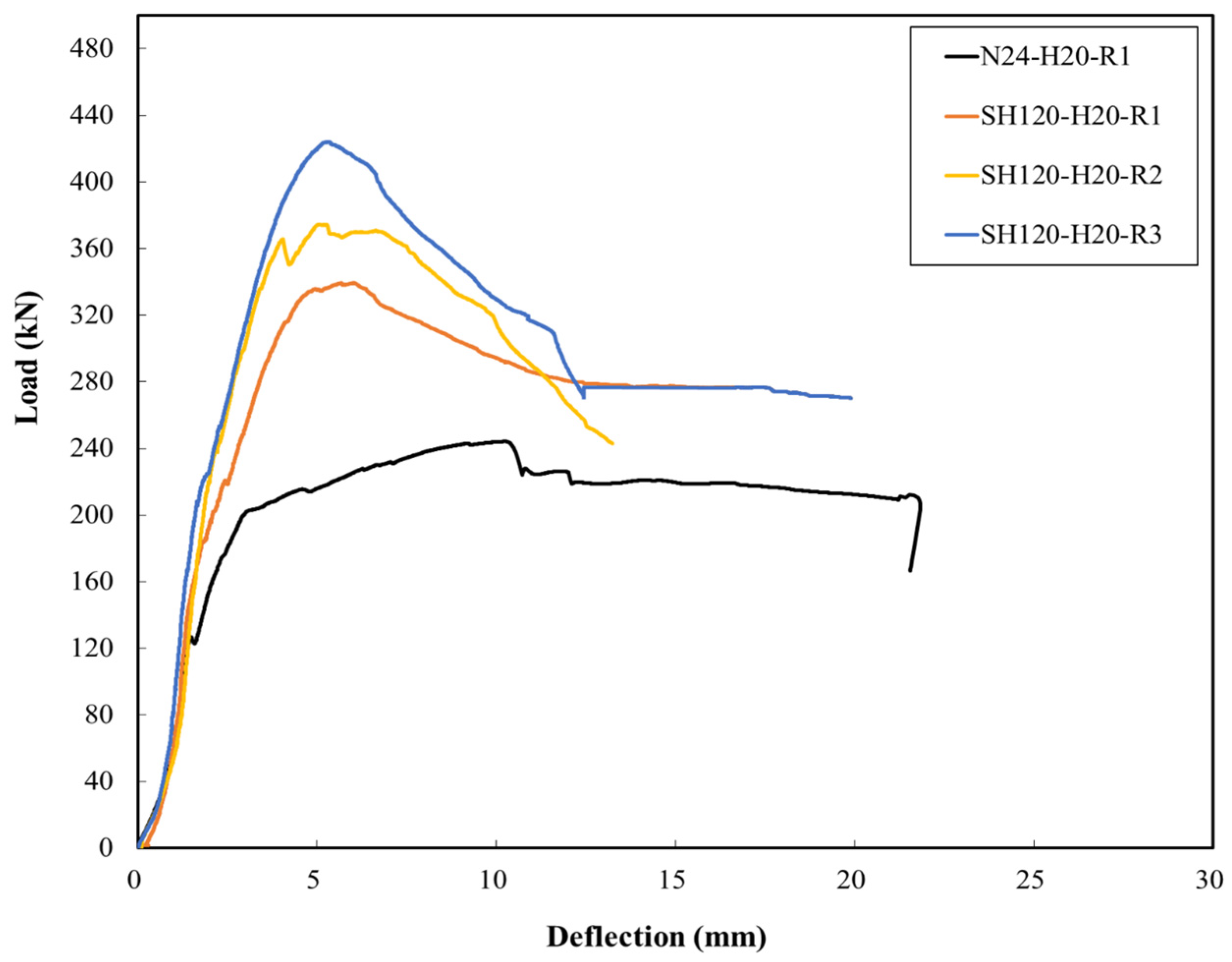

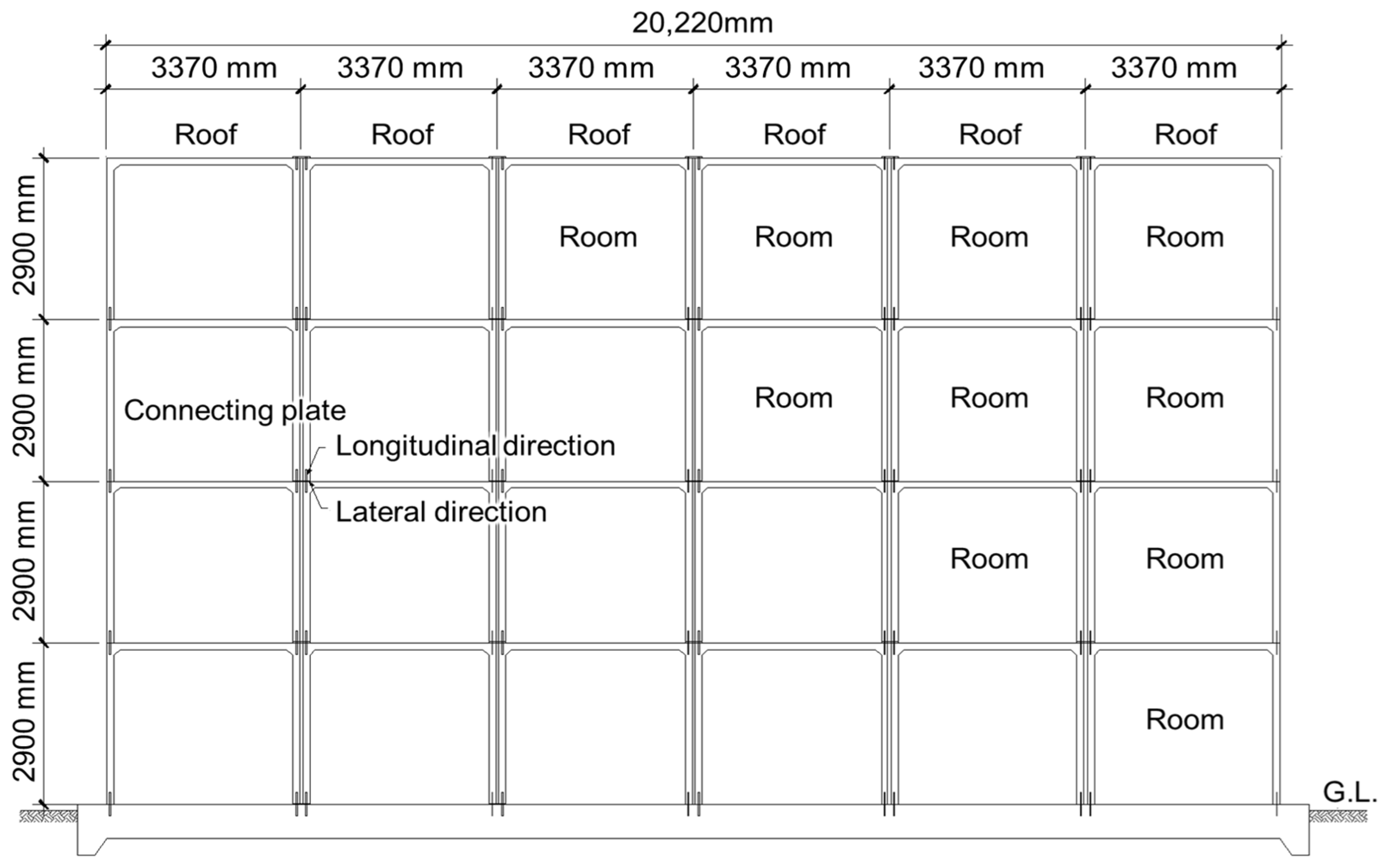
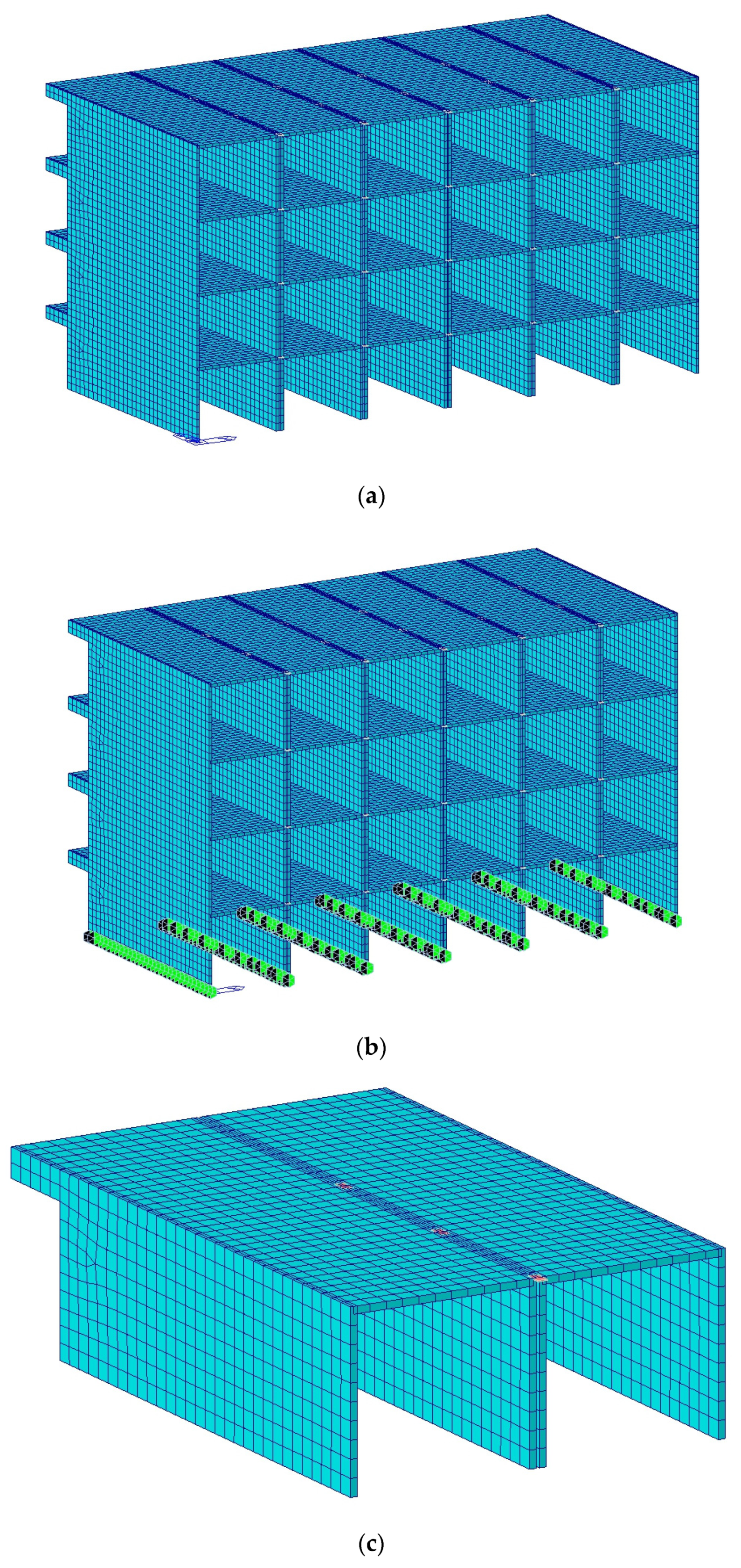
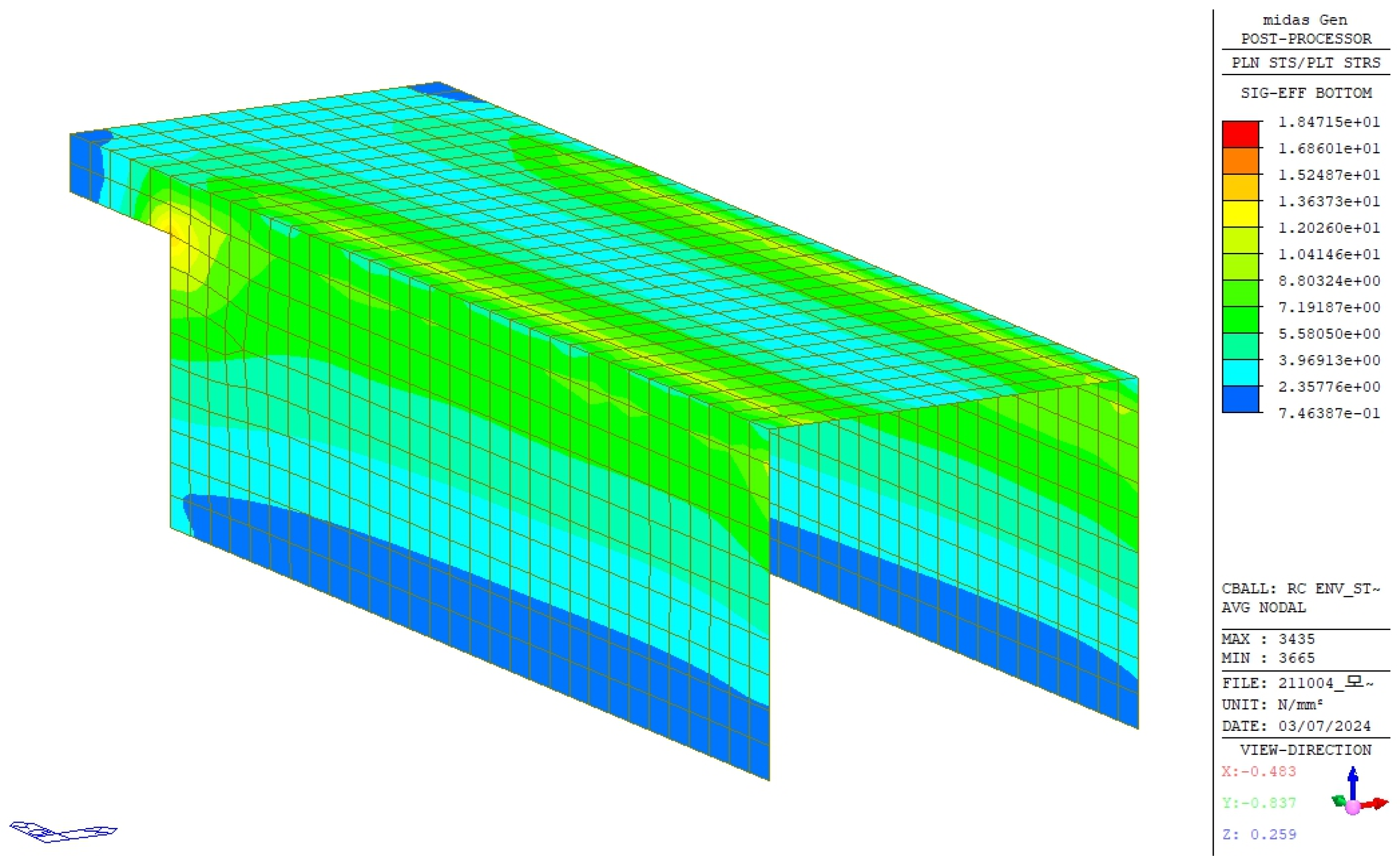
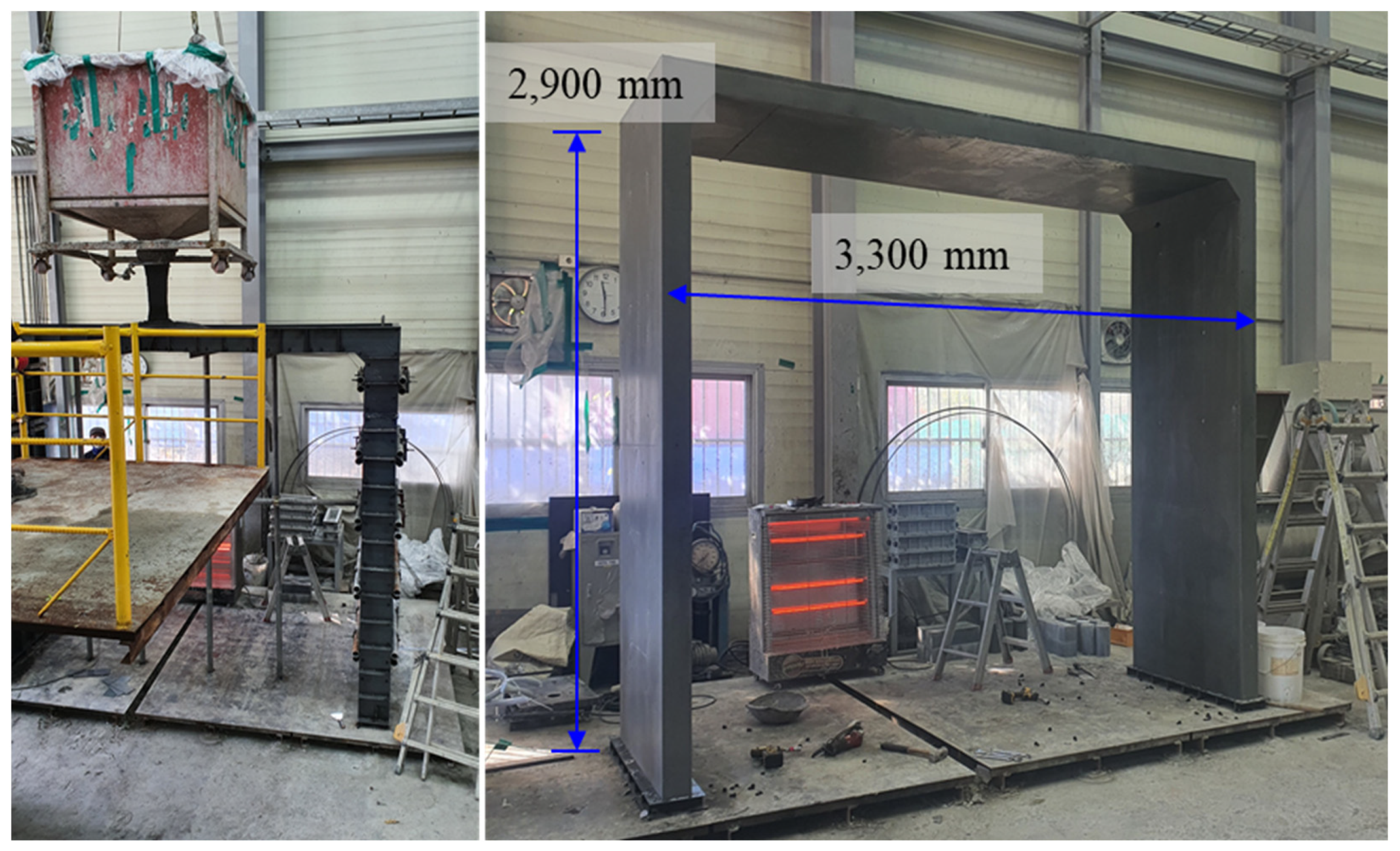
| NC | Typical reinforced concrete specimen with a 200 mm slab thickness |
| UHPFRC-F | Slab thickness of 200 mm, reinforced only with steel fibers |
| UHPFRC-T | Slab thickness of 120 mm, fiber content of 1.0%, and reinforced with steel rebar |
| UHPFRC-I | Slab thickness of 200 mm, based on the UHPFRC-T series with additional thermal insulation installed |
| Degree of Compressive Strength (MPa) | Target Slump Flow (mm) | W/B 1 | Content per Unit Volume (kg/m3) | |||||
|---|---|---|---|---|---|---|---|---|
| Mixing Water | Premixing Binder 2 | Sand | Steel Fiber (1.0%) | Superplasticizer | Shrinkage-Reducing Agent | |||
| 120 | 700 ± 100 | 0.23 | 210 | 1180 | 847 | 78 | 17 | 7 |
| Time (min) | Specimen 1 | Specimen 2 | Specimen 3 |
|---|---|---|---|
| 0 | 0.11 mA | 0.22 mA | 0.53 mA |
| 30 | 0.24 mA | 0.29 mA | 0.63 mA |
| 60 | 0.31 mA | 0.38 mA | 0.66 mA |
| 90 | 0.42 mA | 0.46 mA | 0.72 mA |
| 120 | 0.45 mA | 0.52 mA | 0.74 mA |
| 150 | 0.49 mA | 0.58 mA | 0.78 mA |
| 180 | 0.58 mA | 0.62 mA | 0.82 mA |
| 210 | 0.61 mA | 0.67 mA | 0.86 mA |
| 240 | 0.73 mA | 0.71 mA | 0.90 mA |
| 270 | 0.81 mA | 0.83 mA | 0.93 mA |
| 300 | 0.85 mA | 0.86 mA | 0.95 mA |
| 330 | 0.91 mA | 0.88 mA | 0.97 mA |
| 360 | 0.96 mA | 0.96 mA | 1.13 mA |
| Q (Coulombs) | 12.48 | 13.30 | 17.62 |
| ※ | |||
| Series | Panel | Cross-Section (mm) | Experimental Parameters | ||||||
|---|---|---|---|---|---|---|---|---|---|
| Concrete | Flexural Rebar | ||||||||
| fck (MPa) | ft (MPa) | Slump and Slump Flow (mm) | Cover Depth (mm) | Number | Layer | Yield Strength (MPa) | |||
| RC | N24-H20-R1 | 680 × 200 | 27 | 1.8 | 118 | 40 | 3-D13 | 2 | 426 |
| UHPFRC-F | S120-H20-F1.0 | 680 × 200 | 132 | 10.1 | 723 | - | - | - | - |
| S120-H20-F1.5 | 680 × 200 | 145 | 13.6 | 710 | |||||
| S120-H20-F2.0 | 680 × 200 | 158 | 15.2 | 692 | |||||
| UHPFRC-T | S120-H12-R1 | 680 × 120 | 128 | 10.5 | 718 | 25 | 3-D10 | 2 | 426 |
| S120-H12-R2 | 680 × 120 | 136 | 12.3 | 721 | 25 | 3-D13 | 2 | ||
| S120-H12-R3 | 680 × 120 | 132 | 11.9 | 723 | 25 | 3-D16 | 2 | ||
| UHPFRC-I | SH120-H20-R1 | 680 × 200 | 127 | 10.1 | 719 | 25 | 3-D10 | 2 | 426 |
| SH120-H20-R2 | 680 × 200 | 135 | 11.9 | 720 | 25 | 3-D13 | 2 | ||
| SH120-H20-R3 | 680 × 200 | 131 | 11.5 | 721 | 25 | 3-D16 | 2 | ||
| Series | Panel | Initial Cracking | Yield State | Ultimate State | ||||||
|---|---|---|---|---|---|---|---|---|---|---|
| Pcr (kN) | Mcr (kNm) | Δcr (mm) | Py (kN) | My (kNm) | Δy (mm) | Pu (kN) | Mu (kNm) | Δu (mm) | ||
| RC | N24-H20-R1 | 123.3 | 18.5 | 1.6 | 201.0 | 30.1 | 3.0 | 244.1 | 36.6 | 10.3 |
| UHPFRC-F | S120-H20-F1.0 | 78.6 | 11.8 | 1.3 | - | - | - | 182.7 | 27.4 | 1.8 |
| S120-H20-F1.5 | 79.8 | 23.5 | 1.1 | - | - | - | 302.3 | 45.3 | 3.4 | |
| S120-H20-F2.0 | 79.9 | 12.0 | 1.1 | - | - | - | 448.2 | 67.2 | 4.6 | |
| UHPFRC-T | S120-H12-R1 | 80.5 | 12.1 | 1.2 | 215.3 | 32.3 | 3.5 | 247.7 | 37.2 | 8.5 |
| S120-H12-R2 | 120.9 | 18.1 | 1.5 | 269.8 | 40.5 | 4.7 | 288.3 | 43.2 | 7.4 | |
| S120-H12-R3 | 96.2 | 14.4 | 1.1 | 322.3 | 48.3 | 5.5 | 349.8 | 52.5 | 8.6 | |
| UHPFRC-I | SH120-H20-R1 | 99.1 | 14.9 | 1.2 | 334.5 | 50.2 | 4.8 | 339.3 | 50.9 | 6 |
| SH120-H20-R2 | 95.2 | 14.3 | 1.3 | 363.0 | 54.5 | 4 | 374.5 | 56.2 | 5.1 | |
| SH120-H20-R3 | 70.9 | 10.7 | 1.0 | - | - | 424.0 | 63.6 | 5.3 | ||
| Type | UHPFRC Modular Unit | Steel-Structure Construction Modular Unit | |
|---|---|---|---|
| Model (unit module) | 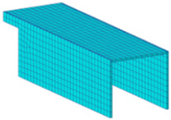 | 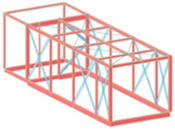 | |
| Structural design | size (m) | 3.32 (B) × 10.5 (L) × 2.9 (H) | 3.83 (B) × 11.3 (L) × 2.91 (H) |
| concrete | thickness: 120 mm, volume: 10.32 m3 | thickness: 150 mm, volume: 6.54 m3 | |
| steel |
|
| |
| Economic feasibility (manufacturing cost) | 10.32 × $670 + 0.70 × $1000 = $7614/module | 6.54 × $130 + 0.51× $1000 + 2.67 × $3000 = $9370/module | |
Disclaimer/Publisher’s Note: The statements, opinions and data contained in all publications are solely those of the individual author(s) and contributor(s) and not of MDPI and/or the editor(s). MDPI and/or the editor(s) disclaim responsibility for any injury to people or property resulting from any ideas, methods, instructions or products referred to in the content. |
© 2024 by the authors. Licensee MDPI, Basel, Switzerland. This article is an open access article distributed under the terms and conditions of the Creative Commons Attribution (CC BY) license (https://creativecommons.org/licenses/by/4.0/).
Share and Cite
Kim, K.; Yoon, Y.; Ryu, G.; Koh, K.; Lim, K. Performance Evaluation of Architectural Modular Member with Ultra-High-Performance Fiber-Reinforced Concrete for Application. Appl. Sci. 2024, 14, 2269. https://doi.org/10.3390/app14062269
Kim K, Yoon Y, Ryu G, Koh K, Lim K. Performance Evaluation of Architectural Modular Member with Ultra-High-Performance Fiber-Reinforced Concrete for Application. Applied Sciences. 2024; 14(6):2269. https://doi.org/10.3390/app14062269
Chicago/Turabian StyleKim, Kyongchul, Yongsik Yoon, Gumsung Ryu, Kyungtaek Koh, and Kwangmo Lim. 2024. "Performance Evaluation of Architectural Modular Member with Ultra-High-Performance Fiber-Reinforced Concrete for Application" Applied Sciences 14, no. 6: 2269. https://doi.org/10.3390/app14062269
APA StyleKim, K., Yoon, Y., Ryu, G., Koh, K., & Lim, K. (2024). Performance Evaluation of Architectural Modular Member with Ultra-High-Performance Fiber-Reinforced Concrete for Application. Applied Sciences, 14(6), 2269. https://doi.org/10.3390/app14062269






